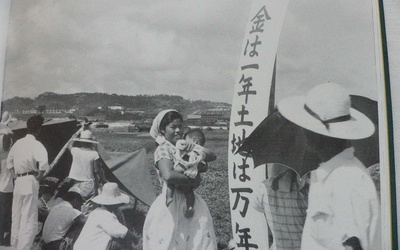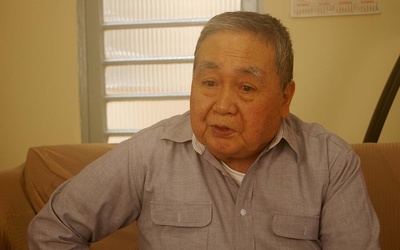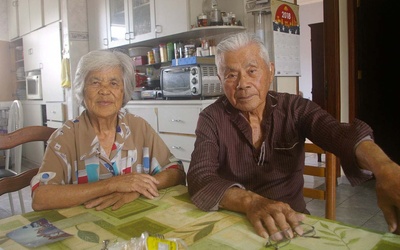Bayonets and bulldozers: Isahama immigrants whose beautiful fields were stolen by the U.S. military

On July 19, 1955, ten years after the end of the war, the land and even the houses in Isahama, Ginowan City, which was said to be one of the most beautiful rice fields in Okinawa, were forcibly requisitioned by the US military. Two years later, ten families who lost their land emigrated to Brazil, an unknown country with no connections. The Isahama Land Struggle was an early resistance movement against the forced confiscation, and became a symbolic historical fact in the subsequent Islandwide Struggle. On the other hand, little is known about the lives of the people who emigrated to Brazil. What were their thoughts when they left their homeland after their land was taken away? What thoughts did they have as they lived in Brazil? Through interviews with three groups of Isahama immigrants, we trace a part of Okinawa's turbulent modern history. This is a five-part series. Reprinted from the Nikkei Shimbun .
Stories from this series
Episode 5: "Now is the happiest time of my life"
Aug. 20, 2018 • Rikuto Yamagata
The Yara family began their sewing business around 1970. The whole family worked from 7am to 12am. Yara says, "I have many sisters, so even women and children could sew. We worked hard, even sacrificing sleep." She now lives alone, and her son visits her once a week from the nearby city of Guarulhos. "When I first came to Brazil, I wanted to go back to Japan. But as the saying goes, 'home is where you live,' and now I …
Part 4: Two Years After the Forced Requisition: Traveling to Brazil
Aug. 13, 2018 • Rikuto Yamagata
Tomoji Yara (78), an Isahama immigrant living in the Casa Verde area of the city of Sao Paulo, and his family worked on a Manila hemp plantation in Davao, Philippines, before the war. When the war began, they were driven away as enemy nationals and lived as refugees along with other Japanese people. They ran around without enough food to eat, and everyone got sick, including with bad legs. During this time, two of his brothers died of malnutrition. After …
Episode 3: "Driven away like a dog"
Aug. 6, 2018 • Rikuto Yamagata
American soldiers with bayonets at the ready, along with bulldozers, cranes, dump trucks, and trucks, appeared at 4:30 in the morning on July 19th, before the sun had fully risen. Since the confiscation had been scheduled for the previous day, the 18th, one landowner commented, "We had expected it, but we let our guard down before dawn" (Ryukyu Shimpo, July 19th, 1980, Evening Edition). At 5 a.m., work began on putting up barbed wire around the farmland, and supporters and …
Part 2: Losing three family members to a machine gun attack during the war
July 30, 2018 • Rikuto Yamagata
"I don't really want to talk about the war or the land struggle," said Anshin Sawatani (85), one of the immigrants from Isahama. When I interviewed him at the home of an acquaintance at the end of last year, he began to talk little by little about his wartime experiences, as he was urged in Uchinaaguchi (the Okinawan dialect) by a person from the same prefecture who was also there. In April 1945, during the fierce Battle of Okinawa, Sawaki …
Episode 1: "We can't leave it to the men"
July 23, 2018 • Rikuto Yamagata
On July 19, 1955, ten years after the end of the war, the land and even the houses in Isahama, Ginowan City, which was said to be "one of the most beautiful fields in Okinawa," were forcibly requisitioned by the US military. Two years later, ten families who lost their land emigrated to Brazil, an unknown country with no connections. The "Isahama Land Struggle" was an early resistance movement against the forced confiscation, and became a symbolic historical fact in …







